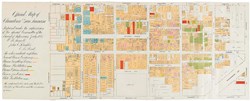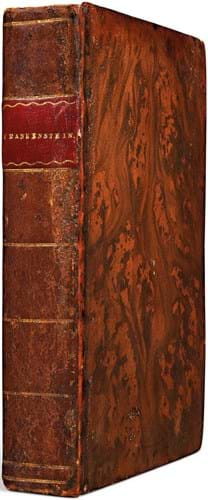
The contemporary calf binding of the 1818 first of Mary Shelley’s Frankenstein… sold for $320,000 (£251,970) at Christie’s New York.
Billed as an exquisite copy, a most unusual 1818 first edition of Mary Shelley’s Frankenstein; or, the Modern Prometheus led a New York sale at $320,000 (£251,970). Christie’s (26/20% buyer’s premium) had hoped that it might make as much as $500,000 in the auction held from April 11-25 but it was not to be.
The three volumes bound as one in contemporary calf, it was published anonymously in a run of just 500 copies and included a preface by her lover and husband, Percy Bysshe Shelley.
This famous tale got very mixed reviews at the time. The morally outraged Quarterly Review wondered “…whether the head or the heart of the author be the most diseased”, but Walter Scott praised her original genius and uncommon powers of imagination.
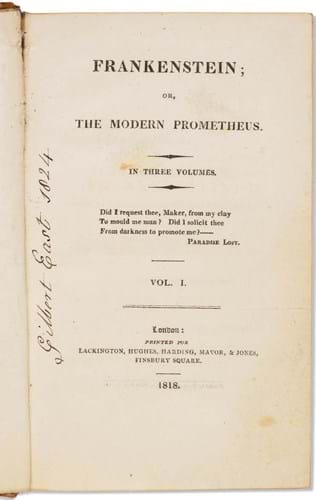
The first volume title-page of the 1818 first of Mary Shelley’s Frankenstein… sold for $320,000 (£251,970) at Christie’s New York.
Bound without the advertisements, this copy bears on the first title-page the ownership note ‘Gilbert East 1824’, possibly Sir Gilbert Hall, a man who left an eccentric will. It made lavish provisions for his pets and was very specific about the construction, decoration and scenting of his coffin.
Just one Frankenstein first has made more – but a great deal more. In September last year the Manney- Baum copy in its original threevolume format and binding was sold in the same rooms at $950,000 (then £688,405), as noted in ATG No 2512.
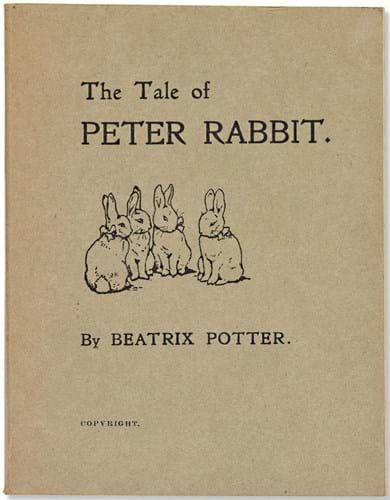
A 1901 first issue of Beatrix Potter’s Tale of Peter Rabbit – $65,000 (£51,180) at Christie's New York.
Sendak selection
A number of lots in the recent sale came from the library of the distinguished illustrator and collector, Maurice Sendak, and were sold to benefit the Rosenbach Museum & Library in Philadelphia.
They were led at $110,000 (£86,615) by a presentation copy of the Kinder-und Haus-Märchen of the brothers Jacob and Wilhelm Grimm. Dating from 1825, it was an example of the first popular German edition – one inspired by the success of Cruikshank’s popular English edition.
It was inscribed by the brothers for Amalie Hassenpflug, the daughter of a Kassel family that proved a rich source of material relating to the brothers’ works. Amalie herself had contributed several tales, but recent scholarship has identified an elder sister, Marie, as a richer source and between them three Hassenpflug sisters are thought to have contributed about 40 fairy tales.
Bid to $75,000 (£59,055) was Grimm’s densely written manuscript of a tale called ‘Liebe Milli’, a clean copy running to 134 lines that was only re-discovered in the 1970s and first offered at auction by Stargardt of Marburg.
It tells of a mother who to save her daughter from impending war sends her into the woods, where an old man offers to give her shelter. The girl serves him faithfully for what she thinks are three days, but which are actually 30 years.
On her eventual return to her mother, it seems, the two women sat together the whole evening in great joy, and then went to bed serenely and calmly. But the next morning the neighbours found them both dead. Grimm news indeed.
A third pick from the Sendak property is something much more familiar. One of the 250 copies that made up the privately printed, 1901 first issue of Beatrix Potter’s Tale of Peter Rabbit sold for $65,000 (£51,180).
M for mystery
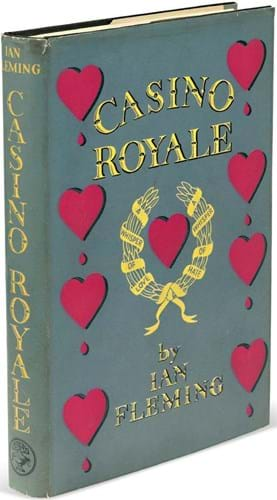
The warmly inscribed but rather puzzling presentation first of Casino Royale – $95,000 (£74,805) at Christie's New York.
Inscribed “To M, these pages from my memoirs!, Ian”, a first-impression copy of Casino Royale of 1953 that made $95,000 (£74,805) was something of a mystery.
The recipient could have been one of a number of people, said Christie’s, but the most likely choice is Admiral John Godfrey. He was Fleming’s superior in Naval Intelligence during the Second World War and the person with whom Fleming had made a visit to the Estoril Casino in Portugal that inspired the plot.
Such familiarity would perhaps justify his inscription and Godfrey himself believed he was the basis of the character, complaining after Fleming’s death that he “turned me into that unsavoury character, M”. An alternative candidate is Maxwell Knight, the head of MI5, whom Fleming knew well and who signed his memos with the initial ‘M’.
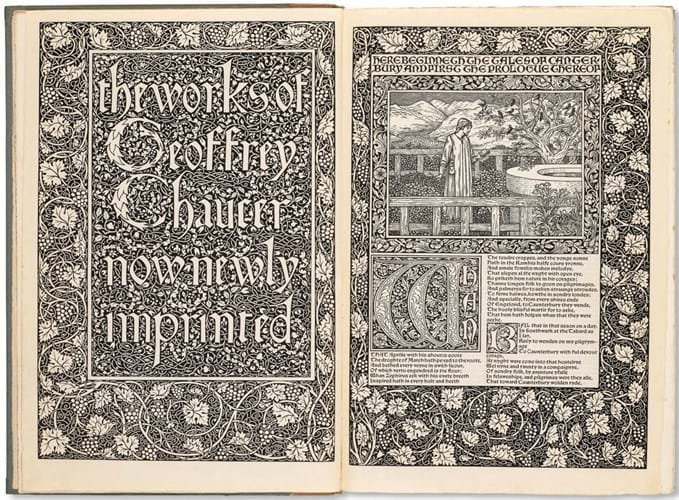
The title-page spread from one of the 425 paper copies of the 1896 Kelmscott Chaucer, the supreme achievement of the 40-year artistic collaboration between William Morris and Edward Burne-Jones – $48,000 (£37,995) at Christie's New York.
Neumann letters
Sold at a somewhat higher than expected $55,000 (£43,305) were two letters of 1941 by John von Neumann, a distinguished American mathematician (born in Hungary) and a key figure in the history of both game theory and computing.
Soon to join the war effort with his work on the Manhattan Project, he had taken a break and agreed to be interviewed for an Associated Press article profiling him and focusing on poker.
The letters are a note to the journalist, Howard Blakeslee, in which he re-writes several sentences in the draft article, and a full-page letter clarifying several mathematical points and agreeing to some simplifications.
Von Neumann also produced a data table of the frequencies of various hands of stud poker, both with 52 cards and when low-value cards are excluded, and provided solutions for the top half, third and quarter of poker hands in both scenarios. Blakeslee claimed that von Neumann’s responses had given answers to three questions that puzzle every poker player, “…when to bet high, when low and when to bluff”.



